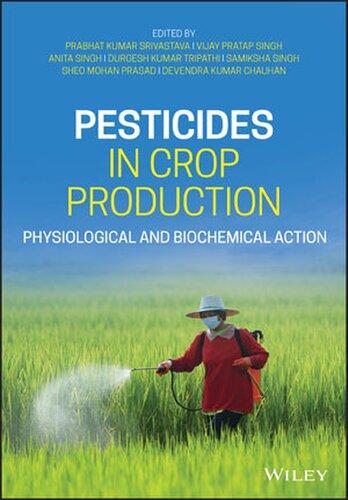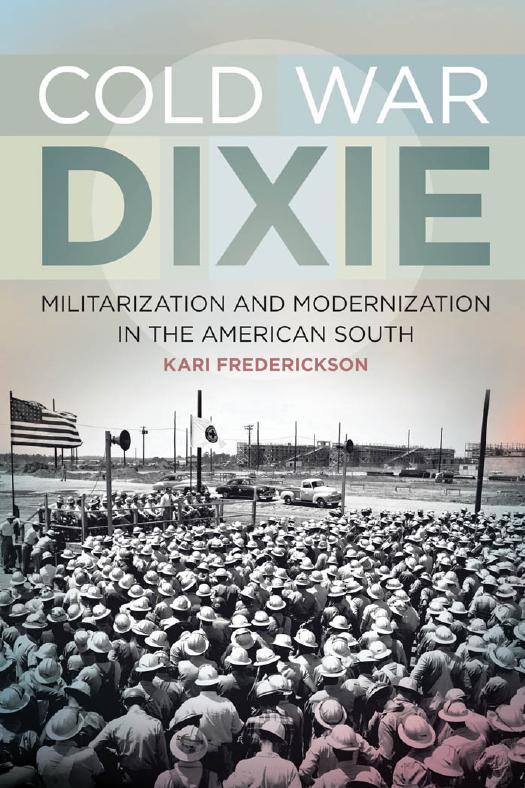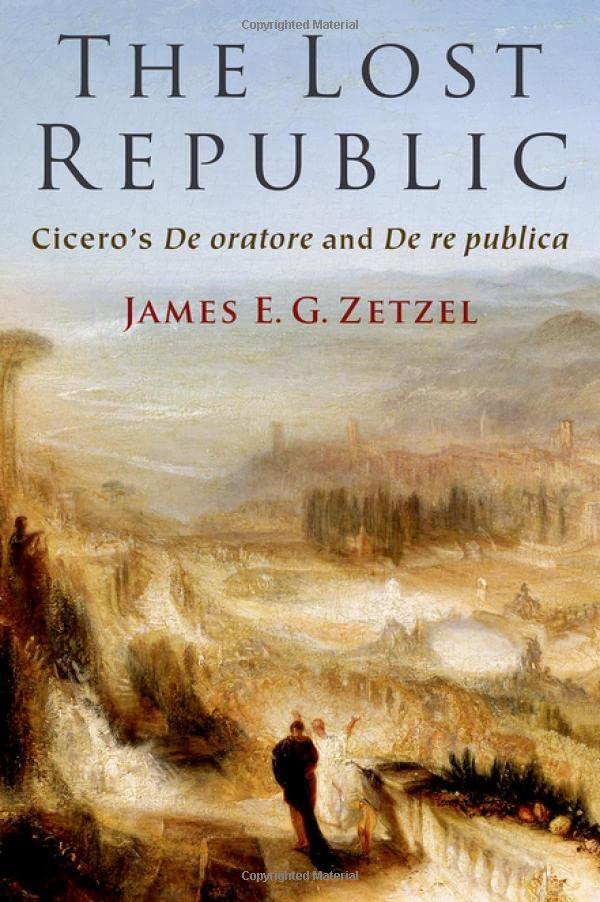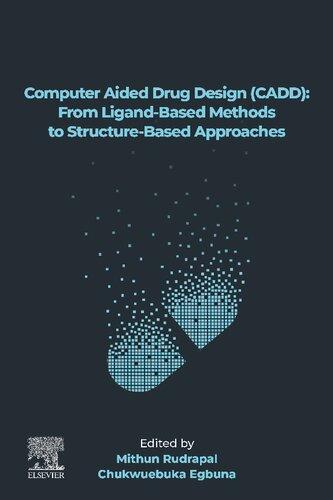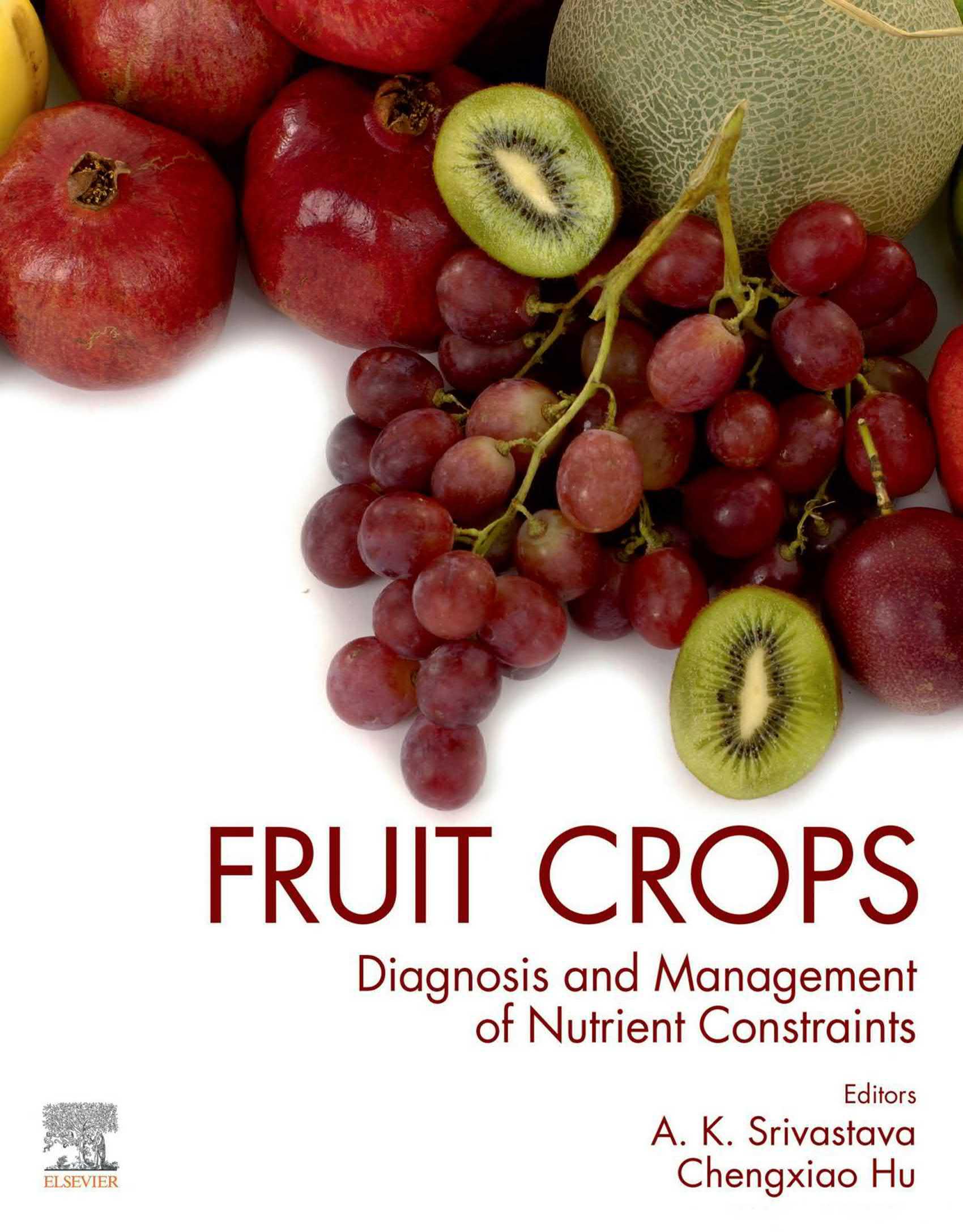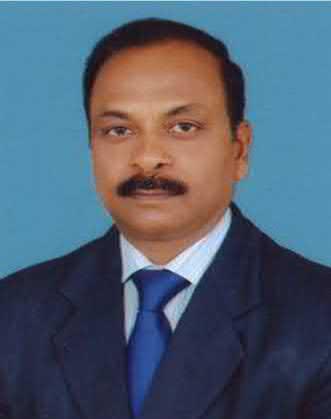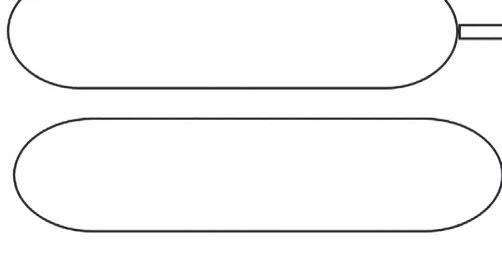FRUITCROPS DiagnosisandManagementofNutrient Constraints
EditedBy
A.K.SRIVASTAVA,Ph.D.
PrincipalScientist(SoilScience),ICAR-CentralCitrusResearchInstitute,Nagpur,India
CHENGXIAO HU,Ph.D.
Professor&PrincipalScientist(Citrusnutritionandfertilization),InstituteofCitrusScienceandCollegeofResources&Environment, HuazhongAgriculturalUniversity,Wuhan,China
Elsevier Radarweg29,POBox211,1000AEAmsterdam,Netherlands TheBoulevard,LangfordLane,Kidlington,OxfordOX51GB,UnitedKingdom 50HampshireStreet,5thFloor,Cambridge,MA02139,UnitedStates
©2020ElsevierInc.Allrightsreserved.
Nopartofthispublicationmaybereproducedortransmittedinanyformorbyanymeans,electronicor mechanical,includingphotocopying,recording,oranyinformationstorageandretrievalsystem,without permissioninwritingfromthepublisher.Detailsonhowtoseekpermission,furtherinformationaboutthe Publisher’spermissionspoliciesandourarrangementswithorganizationssuchastheCopyrightClearance CenterandtheCopyrightLicensingAgency,canbefoundatourwebsite: www.elsevier.com/permissions ThisbookandtheindividualcontributionscontainedinitareprotectedundercopyrightbythePublisher(other thanasmaybenotedherein).
Notices
Knowledgeandbestpracticeinthisfieldareconstantlychanging.Asnewresearchandexperiencebroadenour understanding,changesinresearchmethods,professionalpractices,ormedicaltreatmentmaybecome necessary.
Practitionersandresearchersmustalwaysrelyontheirownexperienceandknowledgeinevaluatingandusing anyinformation,methods,compounds,orexperimentsdescribedherein.Inusingsuchinformationormethods theyshouldbemindfuloftheirownsafetyandthesafetyofothers,includingpartiesforwhomtheyhavea professionalresponsibility.
Tothefullestextentofthelaw,neitherthePublishernortheauthors,contributors,oreditors,assumeanyliability foranyinjuryand/ordamagetopersonsorpropertyasamatterofproductsliability,negligenceorotherwise,or fromanyuseoroperationofanymethods,products,instructions,orideascontainedinthematerialherein.
LibraryofCongressCataloging-in-PublicationData
AcatalogrecordforthisbookisavailablefromtheLibraryofCongress
BritishLibraryCataloguing-in-PublicationData
AcataloguerecordforthisbookisavailablefromtheBritishLibrary
ISBN:978-0-12-818732-6
ForinformationonallElsevierpublications visitourwebsiteat https://www.elsevier.com/books-and-journals
Publisher: CharlotteCockle
AcquisitionEditor: NancyMaragioglio
EditorialProjectManager:ReddingMorse
ProductionProjectManager: SwapnaSrinivasan
CoverDesigner: MilesHitchen
TypesetbySPiGlobal,India
Contributors
Vojte ˇ chAdam DepartmentofChemistryandBiochemistry, FacultyofAgriSciences,MendelUniversityinBrno,Brno, CzechRepublic
RiazAhmad DepartmentofHorticulture,BahauddinZakariya University,Multan,Pakistan
SelenaAhmed TheFoodandHealthLab,Departmentof HealthandHumanDevelopment,MontanaStateUniversity, Bozeman,MT,UnitedStates
KashifAkram DepartmentofFoodSciences,CholistanUniversityofVeterinary&AnimalSciences,Bahawalpur, Pakistan
M.S.Alam HorticultureDivision,BangladeshInstituteof NuclearAgriculture,Mymensingh,Bangladesh
PaulaAlayo ´ nLuaces Fruticultura,FacultaddeCiencias Agrarias,UniversidadNacionaldelNordeste,Corrientes, Argentina
WasayfJ.Almalki DepartmentofChemicalandBiological Engineering,TheUniversityofSheffield,Sheffield,United Kingdom
MuhammadAkbarAnjum DepartmentofHorticulture, BahauddinZakariyaUniversity,Multan,Pakistan
ChrysovalantouAntonopoulou DepartmentoftheAgricultural Development,SchoolofAgriculturalandForestrySciences, DemocritusUniversityofThrace,Orestiada,Greece
Jirı´ Antos ˇ ovsky ´ DepartmentofAgrochemistry,SoilScience, MicrobiologyandPlantNutrition,FacultyofAgriSciences, MendelUniversityinBrno,Brno,CzechRepublic
MargaridaArrobas CentrodeInvestigac ¸ ãodeMontanha (CIMO),InstitutoPolitecnicodeBraganc ¸a,Braganc ¸a,Portugal Igna ´ cioAspiazu ´ StateUniversityofMontesClaros,Montes Claros,Brazil
CuihuaBai CollegeofNaturalResourcesandEnvironment, SouthChinaAgriculturalUniversity,Guangzhou,People’ s RepublicofChina
ElenaBaldi DepartmentofAgriculturalandFoodSciences, AlmaMaterStudiorumUniversityofBologna,Bologna,Italy
AllenV.Barker UniversityofMassachusetts,Amherst,MA, UnitedStates
BetinaPereiradeBem InstitutoFederaldeSantaCatarina (IFSC),Urupema,Brazil
AdalbertoBenavides-Mendoza AutonomousAgriculturalUniversityAntonioNarro,DepartmentofHorticulture,Saltillo, Mexico
MajaBenkovi UniversityofZagreb,FacultyofFoodTechnologyandBiotechnology,Zagreb,Croatia
RenatoVasconcelosBotelho AgronomyDepartment,State UniversityofMidwesternParaná Unicentro,Paraná,Brazil
AlbertoFontanellaBrighenti EmpresadePesquisaAgropecuáriaeExtensãodeRuraldeSantaCatarina(Epagri),São Joaquim,Brazil
GustavoBrunetto UniversidadeFederaldeSantaMaria (UFSM),CampusUniversitário,CentrodeCi^ enciasRurais, DepartamentodeSolos,Camobi,SantaMaria,Brazil
DavidR.Bryla U.S.DepartmentofAgriculture,Agricultural ResearchService,HorticulturalCropsResearchUnit, Corvallis,OR,UnitedStates
Hakan Burhan SenResearchGroup,DepartmentofBiochemistry,FacultyofArtsandScience,DumlupınarUniversity, EvliyaÇelebiCampus,Kutahya,Turkey
ThomasO.Butler DepartmentofChemicalandBiological Engineering,TheUniversityofSheffield,Sheffield,United Kingdom
MiaomiaoCai CollegeofResourcesandEnvironment/ Micro-elementResearchCenter/HubeiProvincialEngineeringLaboratoryforNewFertilizers,HuazhongAgriculturalUniversity;KeyLaboratoryofHorticultural PlantBiology(HZAU),MOE,Wuhan,People ’sRepublic ofChina
RodolfoCanet CenterfortheDevelopmentofSustainable Agriculture,ValencianInstituteofAgriculturalResearch, Valencia,Spain
LucianoCavani DepartmentofAgriculturalandFoodSciences,AlmaMaterStudiorumUniversityofBologna,Bologna,Italy
JamesChapman SchoolofMedicalandAppliedSciences, CentralQueenslandUniversity,Rockhampton,QLD, Australia
JohnM.Chater DepartmentofBotanyandPlantSciences, UniversityofCalifornia,Riverside,CA,UnitedStates
ChristosChatzissavvidis DepartmentoftheAgricultural Development,SchoolofAgriculturalandForestrySciences, DemocritusUniversityofThrace,Orestiada,Greece
JianjunChen DepartmentofEnvironmentalHorticulrtureand Mid-FloridaResearchandEducationCenter,Universityof Florida,InstituteofFoodandAgriculturalSciences,Apopka, FL,UnitedStates
Li-SongChen InstituteofPlantNutritionalPhysiologyand MolecularBiology,CollegeofResourcesandEnvironment, FujianAgricultureandForestryUniversity,Fuzhou,China
MarliseNaraCiotta EmpresadePesquisaAgropecuáriae ExtensãodeRuraldeSantaCatarina(Epagri),Lages,Brazil
JucineiJoseComin UniversidadeFederaldeSantaCatarina (UFSC),DepartamentodeEngenhariaRural,Florianópolis, Brazil
LessandroDeConti InstitutoFederaldeEducac ¸ão,Ci^ enciae TecnologiaFarroupilha CampusSantoAugusto,Santo Augusto,Brazil
Ma ´ rcioCleberdeMedeirosCorr^ ea FederalUniversityofCeará, Fortaleza,Brazil
JuanManuelCovarrubias-Ramı´rez CESAL-INIFAP,Saltillo, Mexico
DanielCozzolino SchoolofScience,RMITUniversity, Melbourne,VIC,Australia
SjoerdE.A.T.M.vanderZee SoilPhysicsandLandManagementGroup,WageningenUniversity,Wageningen,The Netherlands;SchoolofChemistry,MonashUniversity, Melbourne,VIC,Australia
JoseAridianoLimadeDeus InstituteofTechnicalAssistance andRuralExtensionofParaná(EMATER-PR),Curitiba,Brazil
SaraDiLonardo ResearchInstituteonTerrestrial Ecosystems ItalianNationalResearchCouncil(IRET-CNR), SestoFiorentino,Italy
BartolomeoDichio DepartmentofEuropeanandMediterraneanCultures:Architecture,EnvironmentandCultural Heritage(DiCEM),UniversityofBasilicata,Matera,Italy
ZhihaoDong CollegeofResourcesandEnvironment/ Micro-elementResearchCenter/HubeiProvincial EngineeringLaboratoryforNewFertilizers,Huazhong AgriculturalUniversity;KeyLaboratoryofHorticultural PlantBiology(HZAU),MOE,Wuhan,People ’sRepublic ofChina
LadislavDucsay DepartmentofAgrochemistryandPlant Nutrition,TheFacultyofAgrobiologyandFoodResources, SlovakUniversityofAgricultureinNitra,Nitra,Slovakia
MadeleineF.Dupont SchoolofScience,RMITUniversity, Melbourne,VIC,Australia
AaronElbourne SchoolofScience,RMITUniversity, Melbourne,VIC,Australia
FatimaElmusa SenResearchGroup,DepartmentofBiochemistry,FacultyofArtsandScience,DumlupınarUniversity, EvliyaÇelebiCampus,Kutahya,Turkey
JeanetteM.VanEmon EVESciences,Henderson,NV,United States
HassanEtesami Agriculture&NaturalresourcesCampus, FacultyofAgriculturalEngineering&Technology,DepartmentofSoilScience,UniversityofTehran,Tehran,Iran
Ro ´ gerFallas-Corrales SoilPhysicsandLandManagement Group,WageningenUniversity,Wageningen,The Netherlands
UmarFarooq DepartmentofFoodScience&Technology, MuhammadNawazShareefUniversityofAgriculture, Multan,Pakistan
LauraOliviaFuentes-Lara AutonomousAgriculturalUniversityAntonioNarro,DepartmentofAnimalNutrition,Saltillo, Mexico
JoseE.Gaiad Fruticultura,FacultaddeCienciasAgrarias, UniversidadNacionaldelNordeste,Corrientes,Argentina BinGao Department ofAgriculturalandBiological Engineering,UniversityofFlorida,InstituteofFoodand AgriculturalSciences,Gainesville,FL,UnitedStates
MaciejGa˛stoł DepartmentofPomologyandApiculture, AgriculturalUniversityinKraków,Kraków,Poland
MelanieD.GomezHerrera Fruticultura,FacultaddeCiencias Agrarias,UniversidadNacionaldelNordeste,Corrientes, Argentina
FulyaGulbagca SenResearchGroup,DepartmentofBiochemistry,FacultyofArtsandScience,DumlupınarUniversity,EvliyaÇelebiCampus,Kutahya,Turkey
PengGuo InstituteofPlantNutritionalPhysiologyand MolecularBiology,CollegeofResourcesandEnvironment, FujianAgricultureandForestryUniversity,Fuzhou;College ofLifeSciences,HenanAgriculturalUniversity,Zhengzhou, China
ZafarHayat DepartmentofAnimalSciences,CVAS-University ofVeterinaryandAnimalSciences,Jhang,Pakistan
Jia-DongHe CollegeofHorticultureandGardening,Yangtze University,Jingzhou,China
ChengxiaoHu CollegeofResourcesandEnvironment/MicroelementResearchCenter/HubeiProvincialEngineering LaboratoryforNewFertilizers,HuazhongAgriculturalUniversity;KeyLaboratoryofHorticulturalPlantBiology (HZAU),MOE,Wuhan,People’sRepublicofChina
AntonioIbacache InstitutodeInvestigacionesAgropecuarias (INIA),CentroRegionaldeInvestigaciónIntihuasi,LaSerena, Chile
DiegoS.Intrigliolo IrrigationDeparment,CEBAS-CSIC,Murcia;CSICAssociatedUnit “RiegoenlaagriculturaMediterránea,” InstitutoValencianodeInvestigacionesAgrarias, Moncada,Spain
MariaDelRosarioJacobo-Salcedo CENIDRASPA-INIFAP, GómezPalacio,Mexico
ByoungRyongJeong HorticultureMajor,DivisionofApplies LifeScience(BK21PlusProgram),GraduateSchool, GyeongsangNationalUniversity,Jinju,RepublicofKorea
WeiJia CollegeofResourcesandEnvironment/MicroelementResearchCenter/HubeiProvincialEngineering LaboratoryforNewFertilizers,HuazhongAgriculturalUniversity;KeyLaboratoryofHorticulturalPlantBiology (HZAU),MOE,Wuhan,People’sRepublicofChina
Huan-XinJiang InstituteofPlantNutritionalPhysiologyand MolecularBiology,CollegeofResourcesandEnvironment, FujianAgricultureandForestryUniversity,Fuzhou,China
AntonioJua ´ rez-Maldonado AutonomousAgriculturalUniversityAntonioNarro,DepartmentofBotany,Saltillo,Mexico
TamaraJurina UniversityofZagreb,FacultyofFoodTechnologyandBiotechnology,Zagreb,Croatia
DavieKadyampakeni UniversityofFlorida,InstituteofFood andAgriculturalSciences,CitrusResearchandEducation Center,LakeAlfred,FL,UnitedStates
EvangelosKaragiannis LaboratoryofPomology,Department ofAgriculture,AristotleUniversityofThessaloniki, Thessaloniki,Greece
JasenkaGajdos ˇ Kljusuric UniversityofZagreb,FacultyofFood TechnologyandBiotechnology,Zagreb,Croatia
JinxueLi CollegeofResourcesandEnvironment/MicroelementResearchCenter/HubeiProvincialEngineering LaboratoryforNewFertilizers,HuazhongAgricultural University;KeyLaboratoryofHorticulturalPlantBiology (HZAU),MOE,Wuhan,People’sRepublicofChina
WenhuanLiu NationalEngineeringResearchCenterfor CitrusTechnology/CitrusResearchInstitute,Southwest University-ChineseAcademyofAgriculturalSciences, Chongqing,China
ArcangeloLoss UniversidadeFederaldeSantaCatarina (UFSC),CentrodeCienciasAgrarias,Florianopolis,Brazil
CledimarRogerioLourenzi UniversidadeFederaldeSanta Catarina(UFSC),DepartamentodeEngenhariaRural, Florianópolis,Brazil
DonglinLuo CollegeofNaturalResourcesandEnvironment, SouthChinaAgriculturalUniversity,Guangzhou,People’ s RepublicofChina
YanYanMa NationalEngineeringResearchCenterforCitrus Technology/CitrusResearchInstitute,SouthwestUniversityChineseAcademyofAgriculturalSciences,Chongqing,China
RuiMachado ICAAM MediterraneanInstituteforAgriculturalandEnvironmentalSciences;CropSciencesDepartment, SchoolofScienceandTechnology,Universityof Evora, Evora, Portugal
VictorMartinsMaia StateUniversityofMontesClaros,Montes Claros,Brazil
BelenMartı´nez-Alca ´ ntara CertificationSection,PlantHealth Service,MinistryofAgriculture,Environment,Climate ChangeandRuralDevelopment,Valencia,Spain
RenatodeMelloPrado SãoPauloStateUniversity UNESP, Jaboticabal,Brazil
GeorgeWellingtonBastosdeMelo EmbrapaUvaeVinho,Bento Gonc ¸alves,Brazil
DonaldJ.Merhaut DepartmentofBotanyandPlantSciences, UniversityofCalifornia,Riverside,CA,UnitedStates
MichailMichailidis LaboratoryofPomology,Departmentof Agriculture,AristotleUniversityofThessaloniki,Thessaloniki,Greece
Nebojs ˇ aMilos ˇ evic DepartmentofPomologyandFruitBreeding,FruitResearchInstitute, Cacak,RepublicofSerbia
TomoMilos ˇ evic DepartmentofFruitGrowingandViticulture, FacultyofAgronomy,UniversityofKragujevac, Cacak, Republic ofSerbia
AlbaN.Mininni DepartmentofEuropeanandMediterranean Cultures:Architecture,EnvironmentandCulturalHeritage (DiCEM),UniversityofBasilicata,Matera,Italy
AthanassiosMolassiotis LaboratoryofPomology,Department ofAgriculture,AristotleUniversityofThessaloniki, Thessaloniki,Greece
IsidroMorales NationalPolytechnicInstitute,CIIDIR-Oaxaca, Oaxaca,Mexico
BabakMotesharezadeh DepartmentofSoilScience,University ofTehran,Tehran,Iran
SeyedMajidMousavi SoilandWaterResearchInstitute,AgriculturalResearch,EducationandExtensionOrganization (AREEO),Karaj,Iran
MarceloMarquesLopesMuller AgronomyDepartment,State UniversityofMidwesternParaná Unicentro,Paraná,Brazil
WilliamNatale FederalUniversityofCeará,Fortaleza,Brazil
ErikaNava-Reyna CENIDRASPA-INIFAP,GómezPalacio, Mexico
RolfNestby DivisionFoodandSociety(Horticulture),NorwegianInstituteofBioeconomy(NIBIO),Ås,Norway
Danu ´ biaAparecidaCostaNobre StateUniversityofMontes Claros,MontesClaros,Brazil
KennethNyombi MakerereUniversity,CollegeofAgricultural andEnvironmentalSciences,Kampala,Uganda
Da ´ marisLeopoldinaOjeda-Barrios AutonomousUniversityof Chihuahua,LaboratoryofPlantPhysiology,Chihuahua, Mexico
FernandaSoaresOliveira StateUniversityofMontesClaros, MontesClaros,Brazil
lbrahimOrtas ¸ UniversityofCukurova,FacultyofAgriculture, DepartmentofSoilScienceandPlantNutrition,Adana, Turkey
GloriaPadmaperuma DepartmentofChemicalandBiological Engineering,TheUniversityofSheffield,Sheffield,United Kingdom
LeonEtienneParent DepartmentofSoilandAgri-foodEngineering,UniversiteLaval,Quebec,QC,Canada
Vı´ctorManuelParga-Torres CESAL-INIFAP,Saltillo,Mexico
MargaritaParra IrrigationDeparment,CEBAS-CSIC,Murcia, Spain
Bet^ aniaVahldePaula UniversidadeFederaldeSantaMaria (UFSM),CampusUniversitário,CentrodeCi^ enciasRurais, DepartamentodeSolos,Camobi,SantaMaria,Brazil
RodineiFaccoPegoraro FederalUniversityofMinasGerais, BeloHorizonte,Brazil
AnaPerez-Piqueres CenterfortheDevelopmentofSustainable Agriculture,ValencianInstituteofAgriculturalResearch, Valencia,Spain
RaffaellaPetruccelli Institute ofBioEconomy ItalianNational ResearchCouncil(IBE-CNR),SestoFiorentino,Italy
AoifePower SchoolofMedicalandAppliedSciences,Central QueenslandUniversity,Rockhampton,QLD,Australia
JohnE.Preece NationalClonalGermplasmRepository, USDA-ARS,UniversityofCalifornia,Davis,CA,United States
FangyingQiu NationalEngineeringResearchCenterforCitrus Technology/CitrusResearchInstitute,SouthwestUniversityChineseAcademyofAgriculturalSciences,Chongqing, China
AnaQuinones CenterfortheDevelopmentofSustainable Agriculture,ValencianInstituteofAgriculturalResearch, Valencia,Spain
M.A.Rahim DepartmentofHorticulture,BangladeshAgricultureUniversity,Mymensingh,Bangladesh
R.A.Ram ICAR-CentralInstituteforSubtropicalHorticulture, Lucknow,India
HermannRestrepo-Diaz DepartamentodeAgronomia,FacultaddeCienciasAgrarias,UniversidadNacionaldeColombia, Bogotá,Colombia
JorgeB.Retamales HeadISHSDivisionVineandBerryFruits, ViñadelMar,Chile
FelipeKleinRicachenevsky UniversidadeFederaldeSanta Maria(UFSM),DepartamentodeBiologia,SantaMaria,Brazil
PatriziaRicciuti DepartmentofSoil,PlantandFoodSciences (DiSSPA),UniversityofBari ‘AldoMoro’,Bari,Italy
M.A ˆ ngeloRodrigues CentrodeInvestigac ¸ ãodeMontanha (CIMO),InstitutoPolitecnicodeBraganc ¸a,Braganc ¸a,Portugal
IsabelRodrı´guez-Carretero CenterfortheDevelopmentof SustainableAgriculture,ValencianInstituteofAgricultural Research,Valencia,Spain
DaniloEduardoRozane SãoPauloStateUniversity,UNESP, Registro,Brazil
JoseS.Rubio-Asensio IrrigationDeparment,CEBAS-CSIC, Murcia,Spain
PavelRyant DepartmentofAgrochemistry,SoilScience, MicrobiologyandPlantNutrition,FacultyofAgriSciences, MendelUniversityinBrno,Brno,CzechRepublic
AlefsiDavidSa ´ nchez-Reinoso DepartamentodeAgronomia, FacultaddeCienciasAgrarias,UniversidadNacionalde Colombia,Bogotá,Colombia
AlbertoSandoval-Rangel AutonomousAgriculturalUniversity AntonioNarro,DepartmentofHorticulture,Saltillo,Mexico
EvaSapa ´ kova ´ DepartmentofLanguages,FacultyofRegional DevelopmentandInternationalStudies,MendelUniversityin Brno,Brno,CzechRepublic
DjalmaEug^ enioSchmitt UniversidadeFederaldeSanta Catarina(UFSC),Curitibanos,Brazil
FatihSen SenResearchGroup,DepartmentofBiochemistry, FacultyofArtsandScience,DumlupınarUniversity,Evliya ÇelebiCampus,Kutahya,Turkey
RicardoSerralheiro ICAAM MediterraneanInstitutefor AgriculturalandEnvironmentalSciences;Agricultural EngineeringDepartment,SchoolofScienceandTechnology, Universityof Evora, Evora,Portugal
AfshanShafi DepartmentofFoodScience&Technology, MuhammadNawazShareefUniversityofAgriculture, Multan,Pakistan
Bo Shu CollegeofHorticultureandGardening,Yangtze University,Jingzhou,China
FaqihA.B.AhmadShuhaili DepartmentofChemicaland BiologicalEngineering,TheUniversityofSheffield,Sheffield, UnitedKingdom
PetrS ˇ karpa DepartmentofAgrochemistry,SoilScience, MicrobiologyandPlantNutrition,FacultyofAgriSciences, MendelUniversityinBrno,Brno,CzechRepublic
AdrianoSofo DepartmentofEuropeanandMediterranean Cultures:Architecture,EnvironmentandCulturalHeritage (DiCEM),UniversityofBasilicata,Matera,Italy
GiovambattistaSorrenti DepartmentofAgriculturalandFood Sciences,AlmaMaterStudiorumUniversityofBologna, Bologna,Italy
AndreLuizKulkampdeSouza EmpresadePesquisaAgropecuáriaeExtensãoRuraldeSantaCatarina(Epagri),Videira, Brazil
MatheusSeverodeSouzaKulmann UniversidadeFederalde SantaMaria(UFSM),CampusUniversitário,Centrode Ci^ enciasRurais,DepartamentodeSolos,Camobi,Santa Maria,Brazil
A.K.Srivastava IndianCouncilofAgriculturalResearchCentralCitrusResearchInstitute,Nagpur,India
LinconOliveiraStefanello UniversidadeFederaldeSanta Maria(UFSM),CampusUniversitário,CentrodeCiencias Rurais,DepartamentodeSolos,Camobi,SantaMaria,Brazil
AlyssaL.Stewart TheFoodandHealthLab,Departmentof HealthandHumanDevelopment,MontanaStateUniversity, Bozeman,MT,UnitedStates
MargieL.Stratton*
QilingTan CollegeofResourcesandEnvironment/MicroelementResearchCenter/HubeiProvincialEngineering LaboratoryforNewFertilizers,HuazhongAgriculturalUniversity,Wuhan,People’sRepublicofChina
NingTang InstituteofPlantNutritionalPhysiologyand MolecularBiology,CollegeofResourcesandEnvironment, FujianAgricultureandForestryUniversity,Fuzhou;Research InstituteforSpecialPlants,ChongqingUniversityofArtsand Sciences,Chongqing,China
GeorgiaTanou InstituteofSoilandWaterResources,ELGODEMETER,Thessaloniki,Greece
AdrieleTassinari UniversidadeFederaldeSantaMaria (UFSM),CampusUniversitário,CentrodeCi^ enciasRurais, DepartamentodeSolos,Camobi,SantaMaria,Brazil
TadeuLuisTiecher InstitutoFederalFarroupilha,Campus Alegrete,Alegrete,Brazil
MorenoToselli DepartmentofAgriculturalandFoodSciences, AlmaMaterStudiorumUniversityofBologna,Bologna,Italy
ViKhanhTruong SchoolofScience,RMITUniversity, Melbourne,VIC,Australia
Matjaz ˇ Turinek UniversityofMaribor,Maribor,Slovenia
AnaJurinjakTus ˇ ek UniversityofZagreb,FacultyofFood TechnologyandBiotechnology,Zagreb,Croatia
*Retired
SeetharamanVaidyanathan DepartmentofChemicalandBiologicalEngineering,TheUniversityofSheffield,Sheffield, UnitedKingdom
DavorValinger UniversityofZagreb,FacultyofFood TechnologyandBiotechnology,Zagreb,Croatia
TriptiVashisth UniversityofFlorida,InstituteofFoodand AgriculturalSciences,CitrusResearchandEducationCenter, LakeAlfred,FL,UnitedStates
Nicola ´ sVerdugo-Va ´ squez InstitutodeInvestigacionesAgropecuarias(INIA),CentroRegionaldeInvestigaciónIntihuasi, LaSerena,Chile
ZonghuaWang InstituteofOceanography,MinjiangUniversity;FujianUniversityKeyLaboratoryforPlant-Microbe Interaction,FujianAgricultureandForestryUniversity, Fuzhou,China
XiangyingWei InstituteofOceanography,MinjiangUniversity;FujianUniversityKeyLaboratoryforPlant-Microbe Interaction,FujianAgricultureandForestryUniversity, Fuzhou,China;DepartmentofEnvironmentalHorticulrture andMid-FloridaResearchandEducationCenter,University ofFlorida,InstituteofFoodandAgriculturalSciences, Apopka,FL,UnitedStates
Qiang-ShengWu CollegeofHorticultureandGardening, YangtzeUniversity,Jingzhou,China
CristosXiloyannis DepartmentofEuropeanand MediterraneanCultures:Architecture,Environmentand CulturalHeritage(DiCEM),UniversityofBasilicata,Matera, Italy
Lin-TongYang InstituteofPlantNutritionalPhysiologyand MolecularBiology,CollegeofResourcesandEnvironment, FujianAgricultureandForestryUniversity,Fuzhou,China
LixianYao CollegeofNaturalResourcesandEnvironment, SouthChinaAgriculturalUniversity,Guangzhou,People’ s RepublicofChina
JovaniZalamena InstitutoFederaldoRioGrandedoSul (IFRS) CampusRestinga,PortoAlegre,Brazil
TingZhan CollegeofResourcesandEnvironment/MicroelementResearchCenter/HubeiProvincialEngineering LaboratoryforNewFertilizers,HuazhongAgricultural University;KeyLaboratoryofHorticulturalPlantBiology (HZAU),MOE,Wuhan,People’sRepublicofChina
YuanyuanZhao CollegeofResourcesandEnvironment/ Micro-elementResearchCenter/HubeiProvincial EngineeringLaboratoryforNewFertilizers,Huazhong AgriculturalUniversity;KeyLaboratoryofHorticultural PlantBiology(HZAU),MOE,Wuhan,People’sRepublic ofChina
YongqiangZheng CitrusResearchInstitute,Southwest University-ChineseAcademyofAgriculturalSciences, Chongqing,China
VasileiosZiogas InstituteofOliveTree,SubtropicalPlantsand Viticulture,HellenicAgriculturalOrganization(H.A.O.) Demeter,Chania,Greece
AndresZurita-Silva InstitutodeInvestigacionesAgropecuarias(INIA),CentroRegionaldeInvestigaciónIntihuasi,La Serena,Chile
Fruitsandnutritionalsecurity
UmarFarooqa,*,AfshanShafia,KashifAkramb,ZafarHayatc
aDepartmentofFoodScience&Technology,MuhammadNawazShareefUniversityofAgriculture,Multan,Pakistan bDepartmentofFoodSciences,CholistanUniversityofVeterinary&AnimalSciences,Bahawalpur,Pakistan cDepartmentofAnimalSciences,CVAS-UniversityofVeterinaryandAnimalSciences,Jhang,Pakistan *Correspondingauthor.E-mail:ufd302003@gmail.com
Theconceptofnutritionalsecurityisdifficulttodefineduetoitscomplex,broad,andmultidimensionalnature. Foodavailability,affordability,access,safety,anditsstabilityarethebasicpillarsordimensionsoffoodsecurity. Italsohasmultidisciplinarynaturewiththeinvolvementofavarietyofstakeholderswithnationalandinternational status(Candel,2014; Hendriks,2015).Foodavailabilityreferstothesupplyofqualityfoodwithsufficientquantity, andaccessisconcernedwithsocioeconomicstatusofindividualstopurchaseappropriatefoodstomeetnutritional requirements.Similarly,thestabilityinfoodsecurityisreferredtotheachievementofasituationwhereanindividual orwholepopulationhasaccesstoadequatefoodallthetime(FAO,2006).Thesepillarsoffoodsecurityareinterconnected,forexample,foodaccessisnotpossiblewithoutfoodavailabilityandfoodutilizationislinkedwithfoodaccess (Hendriks,2015).Whenpersonalneedsofsufficient,safe,andwholesomefoodarefulfilledforhealthyandactivelife allthetime,thenthepersonisconsideredasfoodsecured.Asperdefinitionsoffoodsecurity,onlyapersonshouldnot haveaccesstofood;instead,thefoodmustalsofulfilltheenergyandnutritionalrequirementsofthebodytoprevent thesituationofmalnutrition.Incurrentscenario,thefoodsecurityhasbecomeamajorissuenotonlyforthedevelopingcountriesbutalsoforthedevelopedcountries.Notonlythesolutionsforsuchacomplexproblemshouldconsidertheenvironmentalandtechnicalperspectives,butalsothenationsshouldlookattheeconomic,social,and politicalaspectstohandlethesituationoffoodinsecurity(Termeeretal.,2015).
Theconcernsoffoodsecurityarenotonlyfocusedontheprevailingconditionsbutalsorelatedtothefuturechallengesoffeedingofrapidlyincreasingworldpopulation(IFPRI,2015).Theresearchfindingshaveindicatedthatthere isacontinuousexperienceoffoodinsecurity.Thefirstorprimaryindicatoroffoodinsecurityisconsideredtobethe shortageorpoverty,whichreflectstheissuesrelatedtofoodavailabilityandaccess.Tocoversuchsituation,thepeople
trytofindoutthewaystocutfoodconsumption.Thisleadstotheusageofcheaperandenergydensefoodcommoditiestofulfilltheenergyrequirementsofthebody,whichresultsinhiddenhungerthroughmalnutritionofspecific nutrientsespeciallythemicronutrients.Thedeficienciesofsuchvitalnutrientsleadtoacutehunger,andsuchsituation isknownasacutefoodinsecurity(Hendriks,2015).
Thereareanumberofidentifiedreasonsforfoodinsecurity,andthemajorfocusofthenationsistoimprovethe economicstatusoftheindividualsothateachpersonmayhavethecapacityofpurchasing.Theothermajortargetisto ensurefoodavailabilitytofeedthewholeworld.Tocombatsuchsituationsoffoodinsecurity,anumberofprograms arebeinglaunchedbythegovernmentandnongovernmentorganizationstofightagainstfoodandnutritioninsecurity (Tanumihardjoetal.,2007).However,theseprogramshavebeenfoundtobelittlefruitfulinreducingfoodinsecurity andfailedtoaddressthechallengesofnutritioninsecurity(Learetal.,2014; Shisanaetal.,2014).Theseprogramshave beenunabletocombatbothfoodandnutritioninsecurities(Khouryetal.,2014).Thebasicreasonbehindthesituations isbasicallythelackoffooddiversification.Thepeoplerelyononlylimitedfoodsspeciallythestaplefoodsoftheir respectiveregions,whichleadtonutritionalinsecurities.Althoughdifferentprogramsoffoodfortificationandsupplementationhavebeenlaunchedallovertheworld,however,theseprogramsarealsolimitedtothefortificationof specifictargetednutrients,andultimately,theconsumerfailstogetallnecessarynutrientsrequiredforahealthylife (Popkinetal.,2012).Thus,theconsumptionofonlystaplefoodoveralongperiodleadstoanumberofhealthdiseases anddisordersduetothesituationofundernutrition(SmithandHaddad,2015; PapathakisandPearson,2012).Dueto thefact,about800millionpeopleallovertheworldareconsideredtobeundernourishedwithtwobillionpeoplesufferingfrommicronutrientdeficiencies.Similarly,duetounbalanceddiet,1.9billionpeopleareoverweightalloverthe globe,andoneoutofeverythreepersonsismalnourished(IFPRI,2015).
Thepoordietsmostlybasedonstaplefoodsarethecommonsourcesofhiddenhungerassuchdietsnodoubtprovideenoughenergyforbodybutfailtoprovideallessentialnutrientslikevitaminsandminerals.Thepeoplesuffering fromhiddenhungerhavenotenoughawarenessabouttheimportanceofbalanceddiet,ortheymaynothaveenough accesstowiderangeofnutritiousfoods(animalandplantbased)duetoanyreason.Thepovertyandhighpricescould beamongthebasicfactorsthattendtheconsumertocontinuelongtimeintakeofstaplefoodswithreducedoreven zerointakeofnonstaplefoods,whichresultinnutritioninsecurity(Bouisetal.,2011).Themajorreasonsofnutritional foodinsecurityarehighlightedin Fig.1.1.Thesesituationsnecessitatetheintakeofnonstaplefoodslikefruitstomeet theneedsofnutrient-basedfoodsecurity.Fruitsandvegetableshaveimportantroleintheprovisionofahealthydiet, anddailyintakeofsuchnonstaplefoodshelpstocontrolandmanageanumberofhumandiseasesandhealthdisorders.Withintakeoffruitsandvegetables,2.7millionlivescouldbesavedthroughthepreventionofchronicdiseases alongwithalleviationofnutritionaldeficienciesrelatedtomicronutrients(WHO,2003).
Differentstrategieshavebeenadoptedtocombatthes ituationofhiddenhunger.Thestrategiesmayinclude fortification,biofortification,supplementation,anddiversification.Thediversificationindietanddietpattern seemstobeoneoftheeffectivemethodstocontrolhiddenhun ger.Thisdietdiversificat ionhasalsopositiveeffect
FIG.1.1 Determinantsofnutritionalinsecurity. ModifiedfromAijaz,R.,2017.PreventinghungerandmalnutritioninIndia.ORFIssueBrief182, pp.1–12.
onchildnutritionaloutcomesevenwhencontrollingfors ocioeconomicfactors.Thedietarydiversificationno doubtensuresahealthyandbalanceddietwithcombina tionofmacro-andmicronutrientsthroughawiderange offoodchoicesincludingfruits.
2Fruits
Fruitsaretheessentialpartofhealthylifestyleandcrucialpartofsafeandhealthydiet.Asperrecommendationsof theWHO,ithasbeenreportedthatthelessconsumptionoffruitsleadstowardvariousmetabolicdisordersespecially cardiovascularssuchas11%heartstrokesand31%ischemicheartdiseaseglobally.Onthebasisofaforementioned facts,itwasalsopredictedthatdailyconsumptionoffruitsmaycanprotectmorethan2.7millionpeopleannually. Therapeuticsignificantoffruitsalsoprovedmightbeduetothecharacteristicsoflowcalories,highnutritionalcontents,dietaryfibers,androbustbiologicallyactivecompound.Thesecharacteristicsoffruitsmakethemabletocurea numberofdisordersandimprovehealthstatusofcommunity(Duetal.,2011).
2.1Nutritionalcomponentsoffruits
Fruitsarenotonlythemostacceptablefortheirdelightfultastebutalsopossessanumberoftherapeuticbenefits containingfrequentnutrients(Buachanetal.,2014; SlavinandLloyd,2012).Awidevarietyoffruitscontainsignificant amountofascorbicacidorvitaminClikecitrusfruits(orangeandmandarin).VitaminCispresentinabundantquantityincitrusfruitsthatonlyonemandarincanaccomplishtherecommendeddailyallowance(RDA)ofvitaminCfora normalhumanbeing.Similarly,otherfruitsarerichwithsomeotherspecificnutrients.Generally,fruitscontain 70%–80%moisture,1.5%proteins,13%–15%carbohydrates,upto6%dietaryfibers,501mgminerals,andupto 90mgvitamins(Fig.1.2).Butthiscompositionvarieswithfruittofruitandvarietytovarietysuchasmangofruitthat containsnearly81%moisture,0.4%fat,0.6%protein,and0.8%fibers.
Italsocontainsnearly17%ofcarbohydrates.Fruitsalsocontainaperishableamountofmineralslikemagnesium, potassium,sodium,phosphorus,andsulfur.Similarly,guavacomprises77%–86%moisturecontent,whereasthe remainingnutrientsincludecrudefiber(2.8%–5.5%),protein(0.9%–1.0%),fat(0.1–%0.5%),minerals(0.43%–0.7%), andcarbohydrate(9.5%–10%),anditalsocontainsvitaminsandminerals.Thiscompositionofguavafruitdiffers significantlywithseason,maturitystage,productiontechnology,andvariety(Mandaletal.,2009; Jimenez-Escrig etal.,2001).Itisagoodsourceofdietaryfiber,dietaryminerals(potassium,manganese,andcopper),andvitamins (A,C,andfolicacid)(Hassimottoetal.,2005).Thisfruitisalsocalled “superfruit” asithasconsiderableamountsof vitaminAandC(Suntornsuketal.,2002).ExceptvitaminC,agoodquantityofothernutrientssuchasfolatecarotenoidsandpotassiumisalsopresentinmanyfruits. β-Cryptoxanthinand β-carotenearetheknownprecursorsof
FIG.1.2 Phytonutrientstree. ModifiedfromFFL(FoodFitforLiving),2016.Phytonutrients Nature’sUnknownSoldiers.Availablefrom: http://www. foodfitforliving.com/thisweekatfffl/2016/1/9/week-13-phytonutrients-atures-unknown-soldiers.(Accessed27January2019).
TABLE1.1 Nutritionalcompositionofvariousfruits(NationalNutrientDatabaseforStandardReference,2018).
NutrientAppleGuavaMangoCitrusPomegranatePearPeachBananaWatermelonApricot Carbohydrates17.3g14.32g25g11.8g18.70g27g16.7g22.84%21g11.12g
Proteins0.3g2.55g1g0.9g1.67g1g1.4g1.09%1g1.4g Lipids0.2g0.95g0.5g0.1g1.17g0%0.4g0.33%0g0.39g
Vitamins
Minerals
Fiber3.0g5.4g3g2.4g4.0g5%3.1g2.6%1g
vitaminAandareclassifiedunderthecategoryofcarotenoids(Aldegueretal.,2014).Thenutritionalcompositionof variousfruitsisshownin Table1.1
2.1.1Lipids
Amoleculeofnutritivefatnormallycontainsanumberoffattyacids(havinglongchainsofhydrogenandcarbon atoms),attachedwithglycerol.Theyarenormallyfoundastriglycerides(threefattyacidsbondedwithoneglycerol backbone).Inhumandiet,aminimumoftwofattyacidsisimportant.Asuitablebalanceofessentialfattyacids omega-6andomega-3fattyacids looksalsoimportantforhealth,thoughconclusiveexperimentaldemonstration hasbeenelusive.Amongthese “ omega ” long-chainpolyunsaturatedfattyacidsaresubstratesforaclassofeicosanoids calledasprostaglandins,whichplayamajorroleinthehumanbody.Fruitslikebanana,grapes,custardapples,ber, andcashewnutaregoodsourcesoffat(Chadha,2007).
2.1.2Water
Wateressentialtonormalbodyfunctionsasavehicleforcarryingothernutrients.Thehumanbodyconsistsof60% water,whichiscrucialfortheproperphysiologyofthehumanbody.Fruitsaretherichestsourceofwaterasthey contain70%–80%watercontents(Desjardins,2007).pt?>
2.1.3Proteins
Proteinsarethebasisofmanyanimalbodystructures(e.g.,muscles,skin,andhair)andformtheenzymes,which catalyzechemicalreactionsthroughoutthebody.Thesefoodsarethebuildingblocksofthebody.Theseareimportant forbodydevelopment.Lackofproteinsinthebodyisresponsibleforstuntedgrowth,increasedchancesofdiseases, andlethargy.Proteinmoleculesconsistofaminoacidshavingnitrogenandsometimessulfur(duringburningofprotein,adistinctivesmellisproducedduetothesecomponents,suchasthekeratininhair).Toproducenewproteins (proteinretention)andexchangedamagedproteins(maintenance),aminoacidsmustberequiredinthehumanbody. Indigestivejuices,aminoacidsaresolubleinsmallintestine,wheretheyareabsorbedintotheblood.Theycannotbe storedinthebodyafterabsorption,sotheyareeithermetabolizedasrequiredorexcretedintheurine.Theaverage adultrequires1gramofproteinperkilogramofbodyweightperday;childrenmayrequiretwotothreetimesofthis amount.Cashewnut,almond,filbert,pecan,pistachio,andwalnutarerichinprotein.Cashewnutistherichestsource ofproteinamongfruits(Kazietal.,2015).
2.1.4Carbohydrates
Carbohydratesareamongthemostimportantnutritionalcomponentsoffruitwithdominatingcontentsofglucose, fructose,andsucrose.Amongfiberconstituents,pectinisthemajorcomponentpresentinfruits,whichmakes65%–70%ofthetotalfiber.Othercomponentsofthefiberlikecellulose,lignin,hemicellulose,andgumsarealsopartoftotal fiber.Duetoimproperbloodglucosemetabolism,hyperglycemia(highbloodglucose)orhypoglycemia(lowblood glucose)mayappear(Mayesetal.,2011).
2.1.5Ascorbicacid(vitaminC)
VitaminCisacategoryofascorbicacidandisincludedinthegroupofwater-solublevitamins.Inthehuman body,thevitaminCtakespartintheformationofcollagen,whichisthemaincomponentofconnectivetissues.In theconsequences,thedeficiencyofthisvitamincausesweaknessoftissues.VitaminCalsoaidsintheironabsorption.Byusingcitrusproducts,wecancontrolcoldandanemia.TheantioxidativeactivityofvitaminCiswell
recognized,andduetothisbehavior,itisconsideredtoberesponsibleinpreventingtheoxidationoffattyacids,protein,andDNA.Astheseradicalsareresponsiblefordiseaseslikecancer,cardiovasculardiseases(CVD),andcataract formation,vitaminCcanplayroleinthemanagementofthesediseasesaswell.The10gdailyintakeofvitaminCis consideredtobeeffectiveforprohibitionofitsdeficiencies.HighamountofvitaminCmaybehazardousasitmay producedangerofironload(FordandGiles,2000).
2.1.6Folicacid
Folicacidisalsoknownasfoliate.Thiswater-solublevitaminisassociatedwithcellmetabolism.Folicacidhelpsin DNA,RNA,andhemoglobinformationandhaskeyroleinanemiaprevention.Byusing400 μgfolicacid,thedefectsof naturaltubecanbeprevented,and225mLoffreshorangejuicehas75 μgfolicacid(NIH,2018).
2.1.7Potassium
Potassiumcontrolstheacid-basebalanceofthebody.Bloodpressureofthebodyisnormallyassociatedwithminerals.Accordingtodailyrequirementallowance,2000mgofpotassiumshouldbetakenondailybasis.Byusingcitrus fruitproductsandjuices,wecanimprovetheintakeofpotassium.A235mgofpotassiumcomesbydrinking225mL glassoforangejuice(DuarteandPaull,2015).
2.2Bioactivecompoundsinfruits
Itplaysaroleagainstfreeradicalsandpreventsthebodyfromfreeradicals.Itprotectsagainstthedegenerativesicknessessuchasmelanomaandcataracts.Italsoplaysaroleinboostingimmunesystem,ironabsorption, andbovinecollagendevelopment.Bovinecollagenplaysaroleinbonefortificationandligamentandwoundhealing (Liuetal.,2012).
2.2.1Phytochemicals
Fruitsareknownastheamazingnaturalmedicinesduetothepresenceofmanybioactivecompoundslikeflavonoids,vitamins,minerals,anthocyanins,andothercompounds(Halliwell,2006).Thesebioactivecompoundsprevent fruitfrompathogensandareresponsibleforfruitflavorandfruitcolor.Atthesametime,theseplayanimportantrole inthepreventionofmanychronicdiseases.However,thedebatablediscussioniswhethertheextractsfromfruitsrich ofphytochemicalshaveequalbeneficialapproachtowardhumanhealthasachievablethroughwholefoodhaving phytochemicalorthemixtureoffoods.Ithasbeeninvestigatedbytheresearchersthatdifferentportionsoffruitshave differentlevelsofphytochemicals.Forexample,theapplepeelonlycontributes0.4%antioxidantactivityduetovitaminCascomparedwiththewholeantioxidantactivitythatclearlyindicatesthatthemostoftheantioxidantactivityis contributedbyothercompoundslikephenolicsandflavonoids(Liu,2003).So,allthephytochemicalsplayanimportantroleinfunctionaloutcomesofthefruits.Theclassificationofphytonutrientspresentsinfruitsandotherfoodcommoditiesiselaboratedin Fig.1.2.Studiesalsopredictedthatthetwophytochemicals(quercetinandellagicacid)in strawberrieswerefoundresponsibleforanticancerandantimicrobialactivitybyblockingthesuppressprogression, initiationofcarcinogenesis,andtumorproliferation(DennyandButtriss,2007).
2.2.2Phenolics
Thephytochemicalslikephenolicarepresentinfruits,andduetoprotectivebiologicalfunctionsofthephenolic,the fruitshaveprimeimportanceindiettherapiesandshouldbeincludedindietpattern.Thephenoliccompoundsare evenpresentintheby-productsoffruitsandinthefruitindustrywastes.Anumberofphenoliccompoundshavebeen foundinthepeelsofvariousfruits(Schieberetal.,2001).Thefruitslikegrapes,apples,raspberries,cranberries,and strawberriesandalsotheirdrinkssuchasorangeandapplejuicesaregoodsourcesofphenolics.Thesecompounds offerverystrongfactsofantimicrobialsuniqueness(UrquiagaandLeighton,2000).
2.2.3Phenolicacid
Applecontainsphenolicacidsthataredihydrochalcones(phloretinglycosides),caffeicacid(chlorogenicacid),and p-coumaricacid(p-coumaryl-quinicacid);botharepresentwithquinicacidintheiresterifiedform(Awadetal.,2000; Thielenetal.,2005).
2.2.4Flavonoids
Flavonoidsarecomposedofcarbonatomswith15innumber,andthesecarbonatomsareorderedinaC6-C3-C6 configuration.Theseareconsideredaslow-molecular-weightcompounds.Physically,flavonoidsaremadeupoftwo rings(aromatic),whichareunitedthroughthreecarbonbridgesleadingtoheterocyclicringstructure(Balasundram etal.,2006).
Flavonoids(orbioflavonoid)areplacedinthelistof secondarymetabolites of plant andareabundantlypresentin theplantcells,whichareresponsibleforphotosynthesis.Thesecompoundsarealsopresentindifferentpartsofaplant likeleaves,stem,fruit,seeds,andflower.Theyareresponsibleforthecoloroftheflowers.Asperclassificationof IUPAC,thesecompoundscanbefurthercategorizedinto flavones (e.g.,rutinand quercetin), isoflavonoids,and neoflavonoids (Viuda-Martosetal.,2010).
Thetwomainsubtypesofapplepolyphenolsareflavonoidsandphenolicacids.Appleisagoodsourceofthese compounds,andthemostimportantflavonoidsinappleareepicatechin,catechin,quercetins,andproanthocyanidins, whicharetheiroligomers.Thesetypesofphenolshaveastringencyandbitternessinapple(Thielenetal.,2005).
2.2.5Tannins
Tanninsarepolyphenoliccompoundsthatarehighinmolecularweightandsolubleinwater.Duetothepresenceof largenumberofhydroxylgroups,thetanninshavetheabilitytobindwithcarbohydratesandproteinsbutuptolimitedlevels.Tanninsarefurtherclassifiedintotwomaingroups:nonhydrolyzabletanninsandhydrolyzabletannins. Hydrolyzabletanninsareactuallygallicacidesters;afterconsumption,theyareconvertedintogallicacidandthen absorbintodigestivetract.Condensedtanninsarehighinmolecularweightcompoundandcontaincatechinpolymers (Hassanpouretal.,2011).
2.2.6Anthocyanins
Anthocyaninsarethemostimportantandprevalentgroupofflavonoidsfoundinpomegranatearils.Thesecompoundsareresponsiblefortheredcolorofjuiceandfruit.Anthocyaninsarewatersolubleandarepolyhydroxyland polymethoxylglucosidicderivativesof2-phenylbenzopyryliumsaltorflavyliumsalts.Theyarepresentinfruitsand aretitledasdelphinidin,malvidin,cyanidin,pelargonidin,petunidin,andpeonidin.Duetothenumberandlocationof hydroxylgroup,eachanthocyaninwasdifferentfromother.Thedifferenceineachanthocyaninarisesfromthepositionandnumberofhydroxylgroups,thelocation,thelevelofmethylationofthehydroxylgroups,numberandnature ofattachedsugars,andaliphaticoraromaticacidsboundtothesugarsinthemolecule(Afaqetal.,2005).
3Therapeuticbenefitsoffruits
Thereisastrongconsiderationregardingutilizationoffruitsandpositiveimpactonhealthstatus(Table1.2).Epidemiologicalresearchstudieshavedemonstratedthehealth-promotingactivitiesoffruitssuchasanticancerproperties,asthma-curingability,cardiovascularprotectiveeffect,antioxidative,antihypercholesterolemic,immunity boostingeffect,antidiabetic,anddigestion-improvingcharacteristics(Saitoetal.,2002).
3.1Anticancerproperties
Manyfruitshaveanticancerpropertiesduetothepresenceofbioactivecompounds,whichworkagainstcancerous cells. SunandLiu(2008) stronglyrecommendedthatthefrequentconsumptionofappleminimizesthethreatofthe occurrenceofcancerespeciallybreastandcoloncancers.Anotherstudywasconductedby Liuetal.(2008) toexpose theeffectofappleextractoncancerouscellsinrats.Resultsofthestudyrevealedthatappleextracthasthepotentialto reducethetumorsizeinrats.Theysuggestedonthebasisoftheresultsoftheirstudythatwholeapple(peel,pomace, andpulp)hasthepotentialtostopthegrowthofcancerouscellsandtoreducethepossibilityofvarioustypesofcancerslikelungcancer,prostatecancer,andcoloncancer.
SunandLiu(2008) performedaresearchexperimentonanticancereffectofbioactivecompoundsofvariouspartsof apple.Theybasicallyseparatedbiologicallyactivecompoundssuchasphenolicsandflavonoidsfromthedifferent partsofapple.Then,thesebioactivecompoundswereevaluatedfortheirpotentialphysiologicaleffects.Results indicatedthatthreephenoliccomponentsandsixflavonoidcompoundswerefoundtobepresentinapplepeel.
TABLE1.2 Healthbenefitsofsomephytonutrientspresentinfruits(Abuajahetal.,2014; Tanveeretal.,2017; Dolkaretal.,2017).
PhytonutrientsCompound Sources
FLAVONOIDS
Quercetin
Kaempferol
Healthbenefits
Grapefruit,apple,cranberriesWorksasantidiabeticbymediationofglucosetransporter
Strawberries,gooseberries, cranberries,grapefruit,apple
Myricetin Grapes,berries,walnuts
Rutin
Citrusfruits,oranges,lemon,berries, limes,grapefruit,peaches,apples
Hesperidin Citrusfruits
Naringenin Citrusfruits
Tangeritin Citrus
Catechin Grapes,applejuice
Epigallocatechin gallate Pomegranatejuice
Anthocyaninsand anthocyanidins
Bilberry,raspberry,strawberry,black currants,peach,plum
Flavonones Citrusfruit
Flavonols Apple
PhenolicacidsBerries
Possessesantidiabeticactivityduetoinvolvementinimproved insulinsecretion
Helpsincontrollingdiabetesbyimprovinginsulinsensitivity
Hasfreeradicalscavengingactivity,helpfulinthepreventionof oxidativestressandinhibitionoflipidperoxidation
Effectivelyincreasestheconcentrationofglycogenand glycolysis(hepatic)
ActsasantihyperlipidemicbyincreasingexpressionofLDL receptor,reducestheglucoseuptakefromintestine
Increasesphosphorylationandaltersthesecretionsofleptin, adiponectin,etc.
Hasantidiabeticpotentialandpreventshighbloodglucose levels
Helpsenhancetheexpressionofinsulinreceptor
Improvetheinsulinsensitivity,neutralizefreeradicalsand ultimatelyreduceriskofcancer,workasantiinflammatory
Possessantioxidantandanticanceractivity
Serveasantioxidant
Helpinthepreventionofcancerandhaveantioxidantactivity
Resveratrol Darkgrapes,raisins,peanut,berriesHasantidiabeticandantihyperlipidemicpotentials
Curcumin Turmericroot
Ferulicacid Apple,pears,citrusfruit
ProanthocyanidinesCranberries
CAROTENOIDS
Lycopene Grapefruit,guava,papaya, watermelon
α-and β-caroteneSomefruits
Zeaxanthin Citrusfruits
DIETARYFIBER
InsolublefiberNuts
SolublefiberSomefruit
Hasantioxidative,antiinflammatory,andanticlotting potentials
Improveseyevisionandiseffectiveagainstheartdiseases
Helpinthemanagementofcardiovasculardiseaseandurinary tractdisorders
Hasantioxidativeandanticanceractivities
Hasabilitytoneutralizefreeradicals
Providesprotectiontoeyesagainstmusculardegeneration
Hasanticancerpotentials
Possessesanticanceractivities,improvesdigestivetractand managementofcardiovasculardiseases
Thetherapeuticevaluationofbioactivecompoundsshowedsignificantantiproliferativepotentialandstrongantioxidativepropertyagainstthelinesofcancercells.
Similarly,citrusfruitscontainaperishableamountofvitaminC,whichpossessedanexcellentanticancerproperties. VitaminCorascorbicacidhasmarvelousdefensivemodeofactionagainstcancerorcarcinogens(Rafiqetal.,2018).
3.2Cardiovascularprotection
Cardiovasculardisordersincludingheartattack,stroke,andveinblockageareincreasingdaybydayglobally.One ofthemainreasonsofthesedisordersisunhealthydietpattern(RyeandBarter,2014). Auclairetal.(2008) recommendedthefrequentconsumptionoffruitsindailydietafterperformingresearchexperimentoncardiovasculardiseases.Inthereportedstudy,theeffectoffruitextractwasevaluatedagainstatheroscroticlesionsinmousemodel. Theresultsoftheexperimentrevealedthatfruitextracthasastrongpotentialtoreducetheatheroscleroticlesions (fattybuildup)about38%inatheroscroticmouse.Resultsconcludedthatfruitspossessedsignificanttherapeutic characteristics,andthesetherapeuticpropertiesoffruitsmightbeduetothepresenceofphenoliccontents.
Likewise, Griepetal.(2013b) illustratedtheimportanceofcitrusfruitanditsproductsonthebasisofmedicalevidences.Theysuggestedonthebasisoftheirresultsthatcitrusfruitsreducetheriskofcardiovasculardisordersand regulatebloodpressure.Theyalsorecommendedtheconsumptionofcitrusfruitsincombinationwithotherfruits, whichmightbemoreeffective.
Chanetal.(2006) reportedthatapricotphenoliccompoundslikelycopene,chlorogenicacid,and β-carotenealleviatetheoxidationoflow-densitylipoproteins(LDL),thusimprovingtheantioxidantordefensemechanismofbody. Thisantioxidantmechanismdiminishesthedangerofemergingatherosclerosisandcoronaryheartdisease.
3.3Hypercholesterolemia
Hypercholesterolemiaisdefinedashighlevelofcholesterolinbloodstreamthatresultsincardiovasculardiseases. Wholefruitshaveextraordinarynutraceuticalvaluebecausenutrientsarepresentindifferentpartsoffruits,soitcan preventatherosclerosismoreeffectively(Chahoudetal.,2004).Totaldietaryfiberbothsolubleandinsolubleandsome otherbioactivecompoundsarealsoresponsibletomanagehypercholesterolemia(Gorinsteinetal.,2000).Various fruitshavetheabilitytoreduceplasmacholesterol.Forexample,medicalevidencesprovedthattheconsumption of100-gpersimmonregularlyinhibitstheformationofplaque/occlusioninbloodarteries(Gorinsteinetal.,2000).
Oneofthemajorreasonsofoccurrenceoftheheartdiseasesis,elevatedlevelsofhomocysteineintheblood,which causestoxicityinvascularwalls.Highconsumptionofcitrusfruitincreasesthefolatelevelinbloodplasmaand decreasestherisehomocysteinelevels.ThisprocessultimatelycontrolledthebloodLDLlevelandadjustedtheblood pressure(Griepetal.,2013a).Inthesameway,apricotcontainssubstantialquantityoffiberbothsolubleandinsoluble forms(Ishaqetal.,2009).SolubledietaryfiberpresentinapricotlowersLDLcholesterol(Andersonetal.,2009; Aller etal.,2004).
3.4Brainhealth
Astrongassociationexistsbetweenconsumptionoffruitsandbrainhealth(Vauzouretal.,2017). Van-de-Restetal. (2015) emphasizedonthehighconsumptionoffruitsforthebettercognitioninadults.Invivoandinvitromechanistic investigationsrevealedtheneuronprotectiveeffectoffruits,andfruitsalsomotivateneurogenesis.Arandomized controlledmedium-termexperimentalstudywasconductedby Pujos-Guillotetal.(2013) toassessthemetabolomic effectofcitrusjuice.Inthisstudy,500mL/dayofcitrusjuicewasadministratedto12humansubjectsforthetime periodof1month.Attheendoftheexperimentalperiod,theresultsinfluencedthepositiveeffectofcitrusconsumptiononmetabolomics.Inthesimilarway,recentstudiesfoundthepositiveeffectofapplejuiceonmicehavingAlzheimer’sdisease.Thisstudyalsocompriseson1-monthduration.Resultsindicatedasignificantimprovementinthe brain(Chanetal.,2006).
3.5Immunity
Immunityisactuallythebalancedconditionwithsatisfactorybiologicaldefensesystemthathastheabilitytofight againstinfections,diseases,anddisordersandpossessessufficienttolerancetoavoiddifferentautoimmunediseases. Fruitscontainanumberofnutritiveandbioactivecompoundsthatareresponsibletoboosttheimmunesystemof humanbeings(Hosseinietal.,2018).Fruitsarerichinantioxidantsandsolublefiberthatprovideahealthydigestive systemthatresultsastrongimmunity(Aprikian,2003).Applecontainsagoodquantityofdigestiblefibersthatpossess prebioticcharacteristics,andtheseprebioticspromotetheguthealthbyincreasingthecivilizationofbeneficialgut microbiota(Loo,2004).Fruit’ssolublefiberstrengthenstheimmunesystemofhumanbeingspreventingfrommany diseases(Sherry,2010).
3.6Diabetes
Elevatedlevelofplasmaglucoseisreferredasdiabetes.Globally,theprevalenceofdiabeticcomplicationshas increaseddaybyday,anddiabetesisalsobecomingthereasonofotherchronicdiseases.So,itspreventionisbecoming theissueofseriousscientificconcern.Recentresearchdocumentedthatthemanagementofdiabeticcomplicationcan bemanagedbyutilizationoffruits.Itwasalsoobservedthatconsumptionofoneappleperdayreducesthe28%possibilityofdiabetes(Songetal.,2005).Methodically,itisworkablethatfruit’spolyphenolparticularlycatechinsand phloretinglucoside(dihydrochalcones)maybeeffectiveagainstdiabetesandthusdeclinestheonsetofdiabetesespeciallytype2diabetes(Marksetal.,2009).
3.7Infectiousdiseases
Phytochemicalsoffruitspossessedsignificantpotentialtoprotectagainstinfectiousagents.Fruitandtheirextracts havestrongidentifiedantimicrobialproperties(NageshandShanthamma,2009).Variousclinicalstudieshaveindicatedthatfruit’sbioactivecompoundshavethepotentialcomparedwiththecommercialantimicrobialstokillthe microbesbydisruptingtheircellmembranes,deprivingthesubstrate,orinactivatingtheenzymes.Throughthismechanism,thesebioactivecompoundsoffruitsblockthemechanismofmicrobes(Rupasinghe,2003).
Aiswaryaetal.(2011) conductedanexperimentaltrialtoevaluatetheantimicrobialpotentialofaqueousandalcoholicextractsofapple.Inthisreportedstudy,theycomparedtheeffectonGram-positiveandGram-negativebacteria throughdiscdiffusionmethod.TheyfoundasignificantzoneofinhibitionofappleextractsagainstbothGrampositiveandGram-negativebacteria,whichwascomparablewithcommercialantibiotic(ciprofloxacin).
Duetal.(2011) evaluatedtheantimicrobialpotentialagainst Salmonellaenterica, Escherichiacoli,and Listeriamonocytogenes throughinvitroexperiment.Appleskinpowderwasusedinediblefilm/coatingtoevaluatethepotentialof inhibitionagainst S.enterica, E.coli,and L.monocytogenes.Theediblefilmcontainingapplepeelshowedthehighest zoneofinhibitionagainst L.monocytogenes. Thelowestconcentrationrequiredtostopthismicrobewas1.5%.
MalaviyaandMishra(2011) performedacomprehensiveresearchexperimenttoassessantimicrobialpotentialof alcoholicandaqueousextractsofvariousfruitslikeapple,pomegranate,guava,andorangesagainstfungiandbacteria.Oncomparisonofbothextracts,resultsshowedthattheaqueousextractsindicatedgreaterantimicrobialactivity incontrasttoalcoholicextracts.Theywereactiveagainst76.4%ofthefullamountofGram-negativebacteriathat included93.75% E.coli,83.33% Klebsiella sp.,and73.68% Pseudomonas sp.
4Conclusion
Byreviewingtheimportanceoffruitsandtheirnutrientsinthemaintenanceofproperphysiologyforimproved healthstatusofcommunity,itisconcludedthatconsumptionoffruitsinadequateamountisnecessarytomaintain ahealthylife.Variouspartsoffruitspossessedtherapeuticbenefitstothehumanbeingsbecausetheycontainessential nutrientsandbiologicallyactivecomponents.Fortheaimtoprovideahealthystatusandasafehealthtothecommunity,nutritionalsecurityiscrucialnowadays.Topreservethenutrientsormaintainthenutritionalsecurity,apositive androbustroleoffoodscientististhedireneedofthecurrentera.
5Futureperspectives
Theroleandimportanceoffruitstoinsurenutritionalfoodinsecuritycannotbeneglectedatanycost.Thefruitscan provideanumberofnecessarynutrientsrequiredforahealthyhumanbody.Thesefruitsnotonlyprovidethenecessarynutrientsbutalsoprovidemanyhealthbenefitsbeyondthenutrientsduetothepresenceofbioactiveandfunctionalcompoundsindifferentpartsofthefruits.Reasonabledataandinformationareavailableonnutritional compositionofdifferentfruitsandtheirroleinhumanhealth.However,thecompositionoffruitsvariesduetoproductiontechnology,season,soilconditions,andvariety.Thereisaneedofscientificworktoimprovethequalityof fruitsespeciallytheproductionofnutrient-enrichedvarietiesoffruitswithreducedantinutritionalcompounds.Moreover,thereisneedofmoreawarenessamongthecommunityregardingtheimportanceofbalanceddietandroleof fruitsforthemanagementofnutritionaldeficienciesandhumandiseases.
References
Abuajah,C.I.,Ogbonna,A.C.,Osuji,C.M.,2014.Functionalcomponentsandmedicinalpropertiesoffood:areview.J.FoodSci.Technol. https://doi. org/10.1007/s13197-014-1396-5
Afaq,F.,Saleem,M.,Krueger,C.G.,Reed,J.D.,Mukhtar,H.,2005.Anthocyaninandhydrolyzabletannin-richpomegranatefruitextractmodulates MAPKandNF-kappaBpathwaysandinhibitsskintumorigenesisinCD-1mice.Int.J.Cancer113,423–433.
Aiswarya,G.,Reza,K.H.,Radhika,G.,Farook,S.M.,2011.Studyforantibacterialactivityofcashewapple(Anacardiumoccidentale)extracts.Pharm. Lett.3(1),193–200.
Aldeguer,M.,López-Andreo,M.,Gabaldón,J.A.,Puyet,A.,2014.Detectionofmandarininorangejuicebysingle-nucleotidepolymorphismqPCR assay.FoodChem.145,1086–1091.
Aller,R.,deLuis,D.A.,Izaola,O.,LaCalle,F.,delOlmo,L.,Fernandez,L.,Hernandez,J.G.,2004.Effectofsolublefiberintakeinlipidandglucose leavesinhealthysubjects:arandomizedclinicaltrial.DiabetesRes.Clin.Pract.65(1),7–11.
Anderson,J.W.,Baird,P.,Davis,R.H.,Ferreri,S.,Knudtson,M.,Koraym,A.,Waters,V.,Williams,C.L.,2009.Healthbenefitsofdietaryfiber.Nutr. Rev.67(4),188–205.
Aprikian,O.,2003.Applepectinandapolyphenol-richappleconcentratearemoreeffectivetogetherthanseparatelyoncecalfermentationsand plasmalipidsinrats.J.Nutr.133(6),1860–1865.
Auclair,S.,Silberberg,M.,Gueux,E.,Morand,C.,Mazur,A.,Milenkovic,D.,Scalbert,A.,2008.ApplepolyphenolsandfibersattenuateatherosclerosisinapolipoproteinE-deficientmice.J.Agric.FoodChem.56(14),5558–5563.
Awad,M.A.,Dejager,A.,Westing,V.L.M.,2000.Flavonoidandchlorogenicacidlevelsinapplefruit:characterizationofvariation.Sci.Hortic. 83,249–263.
Balasundram,N.,Sundram,K.,Samman,S.,2006.Phenoliccompoundsinplantsandagri-industrialby-products:antioxidantactivity,occurrence, andpotentialuses.FoodChem.99,191–203.
Bouis,H.E.,Eozenou,P.,Rahman,A.,2011.Foodprices,householdincome,andresourceallocation:socioeconomicperspectivesontheireffectson dietaryqualityandnutritionalstatus.FoodNutr.Bull.21(1),S14–S23.
Buachan,P.,Chularojmontri,L.,Wattanapitayakul,S.K.,2014.Selectedactivitiesof Citrusmaxima Merr.fruitsonhumanendothelialcells:enhancing cellmigrationanddelayingcellularaging.Nutrients6(4),1618–1634.
Candel,J.,2014.Foodsecuritygovernance:asystematicliteraturereview.FoodSec.6,585–601.
Chadha,K.L.,2007.HandbookofHorticulture.ICAR,Pusa,NewDelhi.
Chahoud,G.,Aude,Y.,Mehta,J.,2004.Dietaryrecommendationsinthepreventionandtreatmentofcoronaryheartdisease:dowehavetheideal dietyet?Am.J.Cardiol.94,1260–1267.
Chan,A.,Graves,V.,Shea,T.B.,2006.Applejuiceconcentratemaintainsacetylcholinelevelsfollowingdietarycompromise.J.AlzheimersDis. 9,287–291.
Denny,A.,Buttriss,J.,2007.PlantFoodsandHealth:FocusonPlantBioactives.EuropeanFoodInformationResource(EuroFIR)Consortium.Funded undertheEU6thFrameworkFoodQualityandSafetyThematicPriority.ContractFOOD-CT-2005-513944. Desjardins,Y.,2007.Firstinternationalsymposiumonhumanhealtheffectsoffruitsandvegetables.ActaHortic.744,470.
Dolkar,D.,Bakshi,P.,Wali,V.K.,Sharma,V.,Shah,R.A.,2017.Fruitsasnutraceuticals.Ecol.Environ.Conserv.23,S113–S118.
Du,W.X.,Olsen,C.W.,Avena-Bustillos,R.J.,Friedman,M.,McHugh,T.H.,2011.Physicalandantibacterialpropertiesofediblefilmsformulatedwith appleskinpolyphenols.J.FoodSci.76(2),149–155.
Duarte,O.,Paull,R.E.,2015.ExoticFruitsandNutsofNewWorld.CABInternational,Wallingford. FAO,2006.PolicyBriefingNo.2.Availablefrom: http://www.fao.org/forestry/13128-0e6f36f27e0091055bec28ebe830f46b3.pdf
Ford,E.S.,Giles,W.H.,2000.Serumvitamins,carotenoids,andanginapectoris:findingsfromtheNationalHealthandNutritionExaminationSurvey III.Ann.Epidemiol.10,106–116.
Gorinstein,S.,Kulasek,G.W.,Bartnikowska,E.,Leontowicz,M.,Zemser,M.,Morawiec,M.,Trakhtenberg,S.,2000.Theeffectsofdiets,supplementedwitheitherwholepersimmonorphenol-freepersimmon,onratsfedcholesterol.FoodChem.70,303–308.
Griep,L.M.,Wolbers,F.,de-Wagenaar,B.,ter-Braak,P.M.,Weksler,B.B.,Romero,I.A.,Couraud,P.O.,Vermes,I.,van-der-Meer,A.D.,van-denBerg,A.,2013a.BBBonchip:microfluidicplatformtomechanicallyandbiochemicallymodulateblood-brainbarrierfunction.Biomed.Microdevices15(1),145–150.
Griep,L.M.O.,Stamler,J.,Chan,Q.,Van-Horn,L.,Steffen,L.M.,Miura,K.,Elliott,P.,2013b.Associationofrawfruitandfruitjuiceconsumptionwith bloodpressure:theINTERMAPstudy1-4.Am.J.Clin.Nutr.97(5),1083–1091.
Halliwell,B.,2006.Oxidativestressandneurodegeneration:wherearewenow?J.Neurochem.97(6),1634–1658. Hassanpour,S.,Sadaghian,M.,Maherisis,N.,Eshratkhah,B.,Chaichisemsari,M.,2011.Effectofcondensedtanninoncontrollingfaecalprotein excretion in nematode-infectedsheep:invivo.J.Am.Sci.7(5),896–900.
Hassimotto,N.M.A.,Genovese,M.I.,Lajolo,F.M.,2005.Antioxidantactivityofdietaryfruits,vegetables,andcommercialfrozenfruitpulps.J.Agric. FoodChem.53(8),2928–2935.
Hendriks,S.,2015.Thefoodsecuritycontinuum:anoveltoolforunderstandingfoodinsecurityasarangeofexperiences.FoodSec.7,609–619. Hosseini,B.,Berthon,B.S.,Saedisomeolia,A.,Starkey,M.R.,Collison,A.,Wark,P.A.B.,Wood,L.G.,2018.Effectsoffruitandvegetable consumptiononinflammatorybiomarkersandimmunecellpopulations:asystematicliteraturereviewandmeta-analysis.Am.J.Clin.Nutr. 108(1),136–155.
IFPRI(InternationalFoodPolicyResearchInstitute),2015.Globalnutritionreport2015:Actionsandaccountabilitytoadvancenutritionandsustainabledevelopment.Washington,DC.Availablefrom: http://ebrary.ifpri.org/cdm/ref/collection/p15738coll2/id/129443
Ishaq,S.,Rathore,H.A.,Majeed,S.,Awan,S.,Shah,S.Z.A.,2009.Studiesonthephysico-chemicalandorganolepticcharacteristicsofapricot(Prunus armeniaca L.)producedinRawalakot,AzadJammuandKashmirduringstorage.Pak.J.Nutr.8(6),856–860.
Jimenez-Escrig,A.,Rincón,M.,Pulido,R.,Saura-Calixto,F.,2001.Guavafruit(Psidiumguajava L.)asanewsourceofantioxidantdietaryfiber. J.Agric.FoodChem.49(11),5489–5493.
Kazi,N.A.,Yadav,J.P.,Agale,M.G.,2015.Nutritionalvalueoffruits.SRJIS,3(16),2937–2943.
Khoury,C.K.,Bjorkman,A.D.,Dempewolf,H.,Ramirez-Villegas,J.,Guarino,L.,Jarvis,A.,Rieseberg,L.H.,Struik,P.C.,2014.Increasinghomogeneityinglobalfoodsuppliesandtheimplicationsforfoodsecurity.Proc.Natl.Acad.Sci.U.S.A.111,4001–4006.
Lear,S.A.,Teo,K.,Gasevic,D.,Zhang,X.,Poirier,P.P.,Rangarajan,S.,Seron,P.,Kelishadi,R.,Tamil,A.M.,Kruger,A.,Iqbal,R.,Swidan,H.,GómezArbeláez,D.,Yusuf,R.,Chifamba,J.,Kutty,V.R.,Karsıdag,K.,Kumar,R.,Li,W.,Szuba,A.,Avezum,A.,Diaz,R.,Anand,S.S.,Rosengren,A., Yusuf,S.,2014.Theassociationbetweenownershipofcommonhouseholddevicesandobesityanddiabetesinhigh,middleandlowincome countries.Can.Med.Assoc.J.186,258–266.
Liu,R.H.,2003.Healthbenefitsoffruitsandvegetablesarefromadditiveandsynergisticcombinationofphytochemicals.Am.J.Clin.Nutr. 78,517S–520S.
Liu,J.R.,Dong,H.W.,Chen,B.Q.,Zhao,P.,Liu,R.H.,2008.Freshapplessuppressmammarycarcinogenesisandproliferativeactivityandinduce apoptosisinmammarytumorsoftheSprague-Dawleyrat.J.Agric.FoodChem.57(1),297–304. Liu,Y.Q.,Emily,H.,Sherry,A.T.,2012.History,globaldistribution,and nutritionalimportanceofcitrusfruits.Compr.Rev.FoodSci.FoodSaf. 11,530–545. Loo,V.J.A.,2004.Prebioticspromotegoodhealth:thebasis,thepotential,andtheemergingevidence.J.Clin.Gastroenterol.38(6),70–75. Malaviya,A.,Mishra,N.,2011.Antimicrobialactivityoftropicalfruits.Biol.ForumInt.J.3(1),1–4. Mandal,S.,Sarkar,R.,Patra,P.,Nandan,C.K.,Das,D.,Bhanja,S.K.,Islam,S.S.,2009.Structuralstudiesofaheteropolysaccharide(PS-I)isolatedfrom hotwaterextractoffruitsof Psidiumguajava (Guava).Carbohydr.Res.344(11),1365–1370. Marks,S.C.,Mullen,W.,Borges,G.,Crozier,A.,2009.Absorption,metabolismandexcretionofciderdihydrochalconesinhealthyhumansandsubjectswithanileostomy.J.Agric.FoodChem.57,10–15.
Mayes,S.,Massawe,F.J.,Alderson,P.G.,Roberts,J.A.,Azam-Ali,S.N.,Hermann,M.,2011.Thepotentialforunderutilizedcropstoimprovesecurity offoodproduction.J.Exp.Bot.29,1–5.
Nagesh,K.S.,Shanthamma,C.,2009.Antibacterialactivityof Curculigoorchioides rhizomeextractonpathogenicbacteria.Afr.J.Microbiol.Res.3(1), 005–009.
NationalNutrientDatabaseforStandardReference,2018.FruitsandFruitJuices.UnitedStatesDepartmentofAgriculture.AgricResSer 3.9.5.1_2018-12-22.
NIH(NationalInstitutesofHealth),2018.Folate,RetrievedFromFolateFactSheetforHealthProfessionals.Availablefrom: https://ods.od.nih.gov/ factsheets/Folate-HealthProfessional/.(Accessed26November2018).
Papathakis,P.C.,Pearson,K.E.,2012.Foodfortificationimprovestheintakeofallfortifiednutrients,butfailstomeettheestimateddietaryrequirementsforvitaminsAandB6,riboflavinandzinc,inlactatingSouthAfricanwomen.PublicHealthNutr.15,1810–1817.
Popkin,B.M.,Adair,L.S.,Ng,S.W.,2012.Globalnutritiontransitionandthepandemicofobesityindevelopingcountries.Nutr.Rev.70,3–21.
Pujos-Guillot,E.,Hubert,J.,Martin,J.F.,Lyan,B.,Quintana,M.,Claude,S.,Chabanas,B.,Rothwell,J.A.,Bennetau-Pelissero,C.,Scalbert,A., Comte,B.,Hercberg,S.,Morand,C.,Galan,P.,Manach,C.,2013.Massspectrometry-basedmetabolomicsforthediscoveryofbiomarkersof fruitandvegetableintake:citrusfruitasacasestudy.J.ProteomeRes.12,1645–1659.
Rafiq,S.,Rajkumari-Kaul,S.A.,Bashir,S.N.,Nazir,F.,Nayik,G.A.,2018.Citruspeelasasourceoffunctionalingredient:areview.J.SaudiSoc.Agric. Sci.17(4),351–358.
Rupasinghe,H.P.V.,2003.Usingchangeforsuccess:Fruit-basedbioproductresearchattheNovaScotiaAgriculturalCollege.AnnualReport2003of theNovaScotiaFruitGrowers’ Association,pp.66–69.
Rye,K.A.,Barter,P.J.,2014.CardioprotectivefunctionsofHDLs.J.LipidRes.55(2),168–179.
Saito,T.,Miyake,M.,Toba,M.,Okamatsu,H.,Shimizu,S.,Noda,M.,2002.InhibitionbyapplepolyphenolsofADP-ribosyltransferaseactivityof choleratoxinandtoxin-inducedfluidaccumulationinmice.Microbiol.Immunol.46,249–255.
Schieber,A.,Stintzing,F.C.,Carle,R.,2001.Byproductsofplantfoodprocessingasasourceoffunctionalcompounds-recentdevelopments.Trends FoodSci.Technol.12,401–413.
Sherry,C.L.,2010.Sicknessbehaviorinducedbyendotoxincanbemitigatedbythedietarysolublefiber,pectin,throughup-regulationofIL-4and Th2polarization.BrainBehav.Immun.24(4),631–640.
Shisana,O.,Labadarios,D.,Rehle,T.,Simbayi,L.,Zuma,K.,Dhansay,A.,Reddy,P.,Parker,W.,Hoosain,E.,Naidoo,P.,Hongoro,C.,Mchiza,Z., Steyn, N.P., Dwane,N.,Makoae,M.,Maluleke,T.,Ramlagan,S.,Zungu,N.,Evans,M.G.,Jacobs,L.,Faber,M.,2014.TheSouthAfricanNational HealthandNutritionExaminationSurvey(SANHANES-1).HSRCPress,CapeTown.
Slavin,J.L.,Lloyd,B.,2012.Healthbenefitsoffruitsandvegetables.Adv.Nutr.3(4),506–516.
Smith,L.C.,Haddad,L.,2015.Reducingchildundernutrition:pastdriversandprioritiesforthepost-MDGera.WorldDev.68,180–204. https://doi. org/10.1016/j.worlddev.2014.11.014.
Song,Y.,Manson,J.,Buring,J.,Sesson,H.,Lin,S.,2005.Associationsofdietaryflavonoidswithriskoftype2diabetesandmarkersofinsulinresistanceandsystemicinflammationinwomen:aprospectiveandcrosssectionalanalysis.J.Am.Coll.Nutr.24,376–384.
Sun,J.,Liu,R.H.,2008.Applephytochemicalextractsinhibitproliferationofestrogen-dependentandestrogen-independenthumanbreastcancer cellsthroughcellcyclemodulation.J.Agric.FoodChem.56(24),11661–11667.
Suntornsuk,L.,Gritsanapun,W.,Nilkamhank,S.,Paochom,A.,2002.QuantitationofvitaminCcontentinherbaljuiceusingdirecttitration. J.Pharm.Biomed.Anal.28(5),849–855.
Tanumihardjo,S.A.,Anderson,C.,Kaufer-Horwitz,M.,Bode,L.,Emenaker,N.J.,Haqq,A.M.,Satia,J.A.,Silver,H.J.,Stadler,D.D.,2007.Poverty, obesity,andmalnutrition:aninternationalperspectiverecognizingtheparadox.J.Am.Diet.Assoc.107,1966–1972.
Tanveer,A.,Akram,K.,Farooq,U.,Hayat,Z.,Shafi,A.,2017.Managementofdiabeticcomplicationsthroughfruitflavonoidsasanaturalremedy. Crit.Rev.FoodSci.Nutr.57(7),1411–1422.
Termeer,C.,Dewulf,A.,Breman,G.,Stiller,S.,2015.Governancecapabilitiesfordealingwiselywithwickedproblems.Adm.Soc.47(6),680–710. Thielen,C.,Will,F.,Zacharias,J.,Dietrich,H.,Jacob,H.,2005.Distributionofdihydrochalconesandflavonolsinappletissueandcomparison betweenfruitandjuice.In:ProceedingsofEuropeanSymposiumonAppleProcessing68,pp.16–18. Urquiaga,I.,Leighton,F.,2000.Plantpolyphenolantioxidantsandoxidativestress.Biol.Res.33,55–64. Van-de-Rest,O.,Berendsen,A.A.,Haveman-Nies,A.,de-Groot,L.C.,2015.Dietarypatterns,cognitivedecline,anddementia:asystematicreview. Adv.Nutr.6,154–168.
Vauzour,D.,Camprubi-Robles,M.,Miquel-Kergoat,S.,Andres-Lacueva,S.B.,Barberger-Gateau,P.,Bowman,G.L.,Caberlotto,L.,Clarke,R., Hogervorst,P.,Kiliaan,A.J.,Lucca,U.,Manach,C.,Minihane,A.M.,Mitchell,E.S.,Perneczky,R.,Perry,H.,Rousse,A.M.,Ramirez,M., 2017.Nutritionfortheageingbrain:towardsevidenceforanoptimaldiet.AgeingRes.Rev.35,222–240.
Viuda-Martos,M.,Fernandez-Lopez,J.,Perez-Alvarez,J.A.,2010.Pomegranateanditsmanyfunctionalcomponentsasrelatedtohumanhealth:a review.Comp.Rev.FoodSci.FoodSaf.9,635–654.
WHO,2003.Diet,nutritionandthepreventionofchronicdiseases.ReportofaJointFAO/WHOExpertConsultation,Geneva,WHOTechnical ReportSeries,No.916.
Furtherreading
Aijaz,R.,2017.PreventingHungerandMalnutritioninIndia.ORFIssueBrief,182,pp.1–12.
Bommarco,R.,Kleijn,D.,Potts,S.G.,2013.Ecologicalintensification:harnessingecosystemservicesforfoodsecurity.TrendsEcol.Evol.28,230–238. FAO,2014.PanoramaofFoodSecurityinLatinAmericaandCaribbean,SantiagodeChile.Availablefrom: http://www.fao.org/3/a-i4230e.pdf FAO,2015.RegionalOverviewofFoodInsecurityLatinAmericaandtheCaribbean.Theregionhasreachedtheinternationalhungertargets.Availablefrom:http://www.fao.org/3/a-i4636e.pdf.
FAOSTAT,2011.FAOStatisticalDatabases.FAO,Rome.Availablefrom: http://faostat.fao.org.(Accessed15September2011).
FFL(FoodFitforLiving),2016.Phytonutrients Nature’sUnknownSoldiers.Availablefrom: http://www.foodfitforliving.com/thisweekatfffl/ 2016/1/9/week-13-phytonutrients-atures-unknown-soldiers.(Accessed27January2019).
He,X.,Liu,R.H.,2008.Phytochemicalsofapplepeels:isolation,structureelucidation,andtheirantiproliferativeandantioxidantactivities.J.Agric. FoodChem.56(21),9905–9910.
Meade,B.,Rosen,S.,2013.InternationalFoodSecurityAssessment,2013-2023,GFA-24.USDepartmentofAgriculture,EconomicResearchService, UnitedStates.




